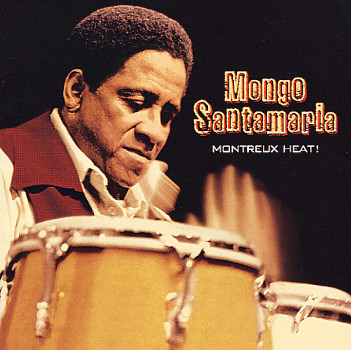| Mongo Santamaria  AKA Ramón Santamaría AKA Ramón Santamaría
Born: 7-Apr-1922
Birthplace: Havana, Cuba
Died: 1-Feb-2003
Location of death: Miami, FL [1]
Cause of death: Stroke
Remains: Buried, Woodlawn Park Cemetery, Miami, FL
Gender: Male
Race or Ethnicity: Black
Occupation: Drummer Nationality: United States
Executive summary: Influential latin percussionist Nicknamed by his father with the Senegalese word for 'tribal chief', Mongo Santamaria began his musical training on the violin, but switched to drums and percussion while still in his teens. Having dropped out of school to pursue the life of a professional musician in Havana, Mongo relocated to Mexico as part of a dance troupe before emigrating to New York in 1950, where he worked with leading Latin ensembles such as those of Perez Prado and Tito Puente. He stayed with Puente's band for over six years, building a reputation for himself through his energetic drum duels with the bandleader. During this period he recorded the album Changó, which Mongo would later regard as one of his best efforts.
After a disagreement with Puente in 1957, Santamaria joined up with vibraphonist Cal Tjader for the next three years, relocating to California where the band recorded a series of albums for Fantasy Records. While still working with Tjader, Sanatamaria continued his own recording career through the same label. The second of these albums, 1959's Mongo, included Afro-Blue: a song that would become not only one of his most popular compositions, but a jazz standard as well. After making the journey in 1960 to record Our Man In Havana in Cuba with local musicians he left Tjader and formed his own Cuban-jazz ensemble, its first recorded offering Sabroso! being released in 1962.
Santamaria returned to New York shortly afterwards, assembling another group and signing with Riverside Records. The following year he released Watermelon Man, a song presented to him by pianist Herbie Hancock while he was sitting in on one of Santamaria's shows in the Bronx; the single subsequently climbed to number ten in the popular charts. Fueled by the record's success, the percussionist continued to explore its blend of Latin, jazz and pop music well into the 1970s. A more lucrative contract with Columbia was landed in 1965, but it was with the Vaya label that the percussionist would win his first Grammy award (for the 1977 album Amancer).
In the 1980s a stronger jazz element become evident in Santamaria's music, with notable jazz musicians such as Dizzy Gillespie occasionally appearing with his band. He remained an active performer into the 1990s, and continued to record after his retirement from live work -- even releasing another album with his former label Fantasy in 1995. In 2003, he died of a stroke in a Miami hospital.
[1] Baptist Hospital, Miami, FL.
Wife: Yolanda Santamaria
FILMOGRAPHY AS ACTOR
Salsa (7-May-1988) · Himself
Made in Paris (9-Feb-1966) · Himself
Do you know something we don't?
Submit a correction or make a comment about this profile
Copyright ©2019 Soylent Communications
|